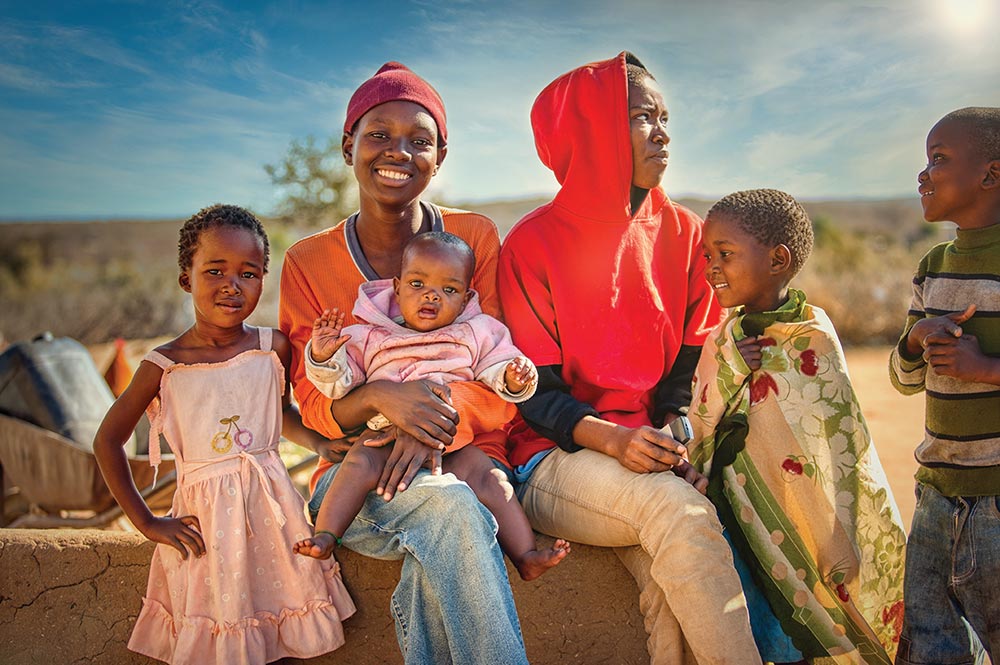What You Need to Know About Africa
In just over two decades Christadelphians have become a much more diverse and global community. This is one of the greatest and most positive developments in the history of our community.
 Read Time: 4 minutes
Read Time: 4 minutes
When I was a young boy, my parents bought an encyclopedia series called, The Book of Knowledge. I remember referencing it countless times for school papers, or sometimes just to help me know more about a particular topic.
What I will always remember from those volumes was the protective paper cover. It had an artist’s view of what the future would look like. Cities with skyscrapers. Helicopters and flying cars! Oh, how I expected to be flying some vehicle rather than driving on the pavement by the time I grew up!
It’s funny how we develop a picture in our heads of what the future might look like. For many of us, our vision of the future is only incrementally different. We struggle to think of ways our lives might exponentially change. Technology has taught us to recognize that what is normal today is going to be outdated in a very short time.
So, as I hold my iPhone in the palm of my hand, I assume that in the near future it too will seem like the original “brick” cellular phone I had 15 years ago, which I used to marvel about back then. To be honest, I had never really thought much about how our community might change prior to the return of the Lord. Life as a Christadelphian, for me, was pretty stable, and change was, at best, incremental. But change it has!
Christadelphian growth in Africa is consistent with the growth of overall Christianity on the continent.
Since the late 1990s, our community has fundamentally transformed right under our noses. The pace is dizzying. Today, more than 60% of all Christadelphians live in Sub-Saharan Africa. In Mozambique, a country less populated than the State of California, ecclesias baptize nearly 1,000 new brothers and sisters every year. That’s roughly 20 baptisms every week!
The profile of the average Christadelphian is no longer from Western countries. English is no longer the most spoken language, and racially, we are no longer primarily Caucasian. In just over two decades we have already become a much more diverse and global community. This is one of the greatest and most positive developments in the history of our community.
We can see the hand of our Lord and his angels at work, and our hearts are filled with thankfulness as we marvel at this answer to our prayers. Christadelphian growth in Africa is consistent with the growth of overall Christianity on the continent.
While Christianity is declining in Western countries, by 2050 Africa will represent more than 40% of all global Christians. In less than 30 years, Africa is projected to be home to more than one billion Christians, by far the largest concentration on the planet. In 1900, there were only ten million Christians in Africa and today there more than five hundred million.1
WHY IS THIS IMPORTANT TO YOU?
Most of us live in societies that are “post-Christian.” As believers, we are programmed to think incrementally, to accept constant disappointment. We see empty chairs in our ecclesial halls, Bible classes with low attendance, consistently disappointing responses to outreach. We may think this is what is to be expected, the conditions of the Last Days prophesied by our Lord. A time of failing faith and progressive isolationism.
Yet, we must acknowledge that our own experience is not descriptive of the fulness of our community. The Truth is on fire in other regions, such as Africa. The Kingdom of God is not merely a doctrinal argument in these lands—it is a unifying message that blazes within the bosom.
It is a viral message being naturally passed along in the marketplace, or across the street with a neighbor. It is, in many ways, the spiritual experience we have all longed for. So, why is this an important consideration for those of us living in Western society?
To answer this question, I reached out to the Christadelphian Bible Mission (CBM) in the UK to help us understand the phenomenal growth in Africa.2 I am deeply grateful for Bre. Mark Basten (CBM Chair), Paul Boyd (CBM General Secretary) and John Mathias (CBM East Africa Secretary), all who hold important roles with the CBM for Africa. These brethren have shared the history of the Truth in Africa, as well as some of the key challenges and opportunities ahead.
I am also pleased to share with you a moving article by Bro. Peter Ojike from Lagos, Nigeria (see page 602). Bro. Peter describes the growth of the Truth in Nigeria, and I promise you that if you take the time to read his article, especially the dramatic way the Truth grew out of a cave of refuge during the Biafran War, you will have a more intimate picture of how God is working in Africa.
We are also pleased to share two short exhortations with you, also from African brethren, in our Exhortation and Consolation section (pages 580-584). The story of Africa started with small, often individual acts of faith. A brother in Australia placed an ad in Nigeria. Brothers and sisters, continents away, conducted correspondence courses. Local brethren boldly preached to all, including a relative of a royal prince!
We can take such great comfort in knowing how the Lord is working in the world today. The Truth is not dying. It is prospering. In the days ahead, we may see challenges far greater than COVID-19 which trouble our Western lands. We may see economic dysfunction, increased violence and continued immorality.
Will these generate an unprecedented thirst for the coming Kingdom of God? I hope you find these articles help open in your mind, as they did for me, the great possibilities of the Truth. I hope you will share with me the excitement about the power of our Lord and his angels. We should never limit in our hearts and minds what our Lord can do.
Will we be ready when a similar window of opportunity is created in our own lands?
Dave Jennings

1 “Sub-Saharan Africa will be home to growing shares of the world’s Christians and Muslims” David McClendon, Pew Research Center, April 19, 2017.
2 This report does not cover the rich history of the countries served by the CBM South Africa, which includes South Africa, Botswana, Lesotho, and Swaziland.